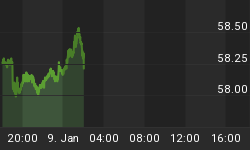Portfolio management involves more than research, understanding investment trends, choosing an asset allocation, rebalancing and making security buy and sell decisions. Periodically, you need to measure how well you are doing.
To evaluate how well you are doing, you need to calculate your rate of return.
To know whether your rate of return is "good" or "bad", you need to compare it to the return of a benchmark. Your benchmark could be some absolute number, but it typically consists of an index or an allocation of several indices.
However, many investors fall down on the job -- they don't do a return calculation, because they don't know how.
Calculating investment return is a simple matter if your cash flows are simple. The calculation is more complicated if you have money flowing into, out of, or into and out of your investment account during the period your wish to measure.
For example, if you begin the year with $1 million, deposit no new money and make no withdrawals, and end the year with $1.1 million; your 10% return is obvious.
However, if you deposit an additional $5,000 per month to your account, that same $1.1 million ending account value does not represent a 10% return. The return is actually 3.4% due to the different time values of the twelve periodic deposits (you had more than $1 million invested during the year).
Similarly, if you withdrew $5,000 per month instead depositing new money, the ending $1.1 million does not represent a 10% return. The actual return was 17%, due to the time values of the withdrawals (you had less than $1 million invested all year).
More complicated yet is if you are both depositing and withdrawing during the period. For example, if you are depositing $5,000 each month and then withdraw $30,000 for income taxes in April and $100,000 in July for a down payment on a vacation home, you have a definitely complex calculation to perform. The return in that example was 17.7%.
All of these examples are best handled with a computer of some sort.
You can do the calculation with various sophisticated hand held calculators, but then you don't have a permanent record.
As a practical matter, you need to use a computer spreadsheet, such as Excel, to record the amount and date of all the cash flows into and out of your investment account, as well as the beginning and ending value to determine how well you did.
We use Excel for that, and the XIRR math function. A hypothetical 2-year analysis of annual and cumulative investment return for cash flows with irregular dates and irregular amounts is illustrated in the chart.

The "trick" to remember to make the calculation work is to enter your portfolio value at the end of the period as cash flow back to you (as if you had sold the entire portfolio).
Then, calculate the IRR (using the function XIRR for irregular cash flows) including the row for that imaginary portfolio sale.
On the line after the imaginary portfolio sale, using the same date as the imaginary sale, make an imaginary reinvestment of your entire portfolio value.
The imaginary reinvestment is the starting point for next year's return calculation. It will also create a zero net cash flow for the two entries in the overall history. That zero net entry will enable you to do a cumulative IRR from the earliest date in your portfolio cash flow records.
















